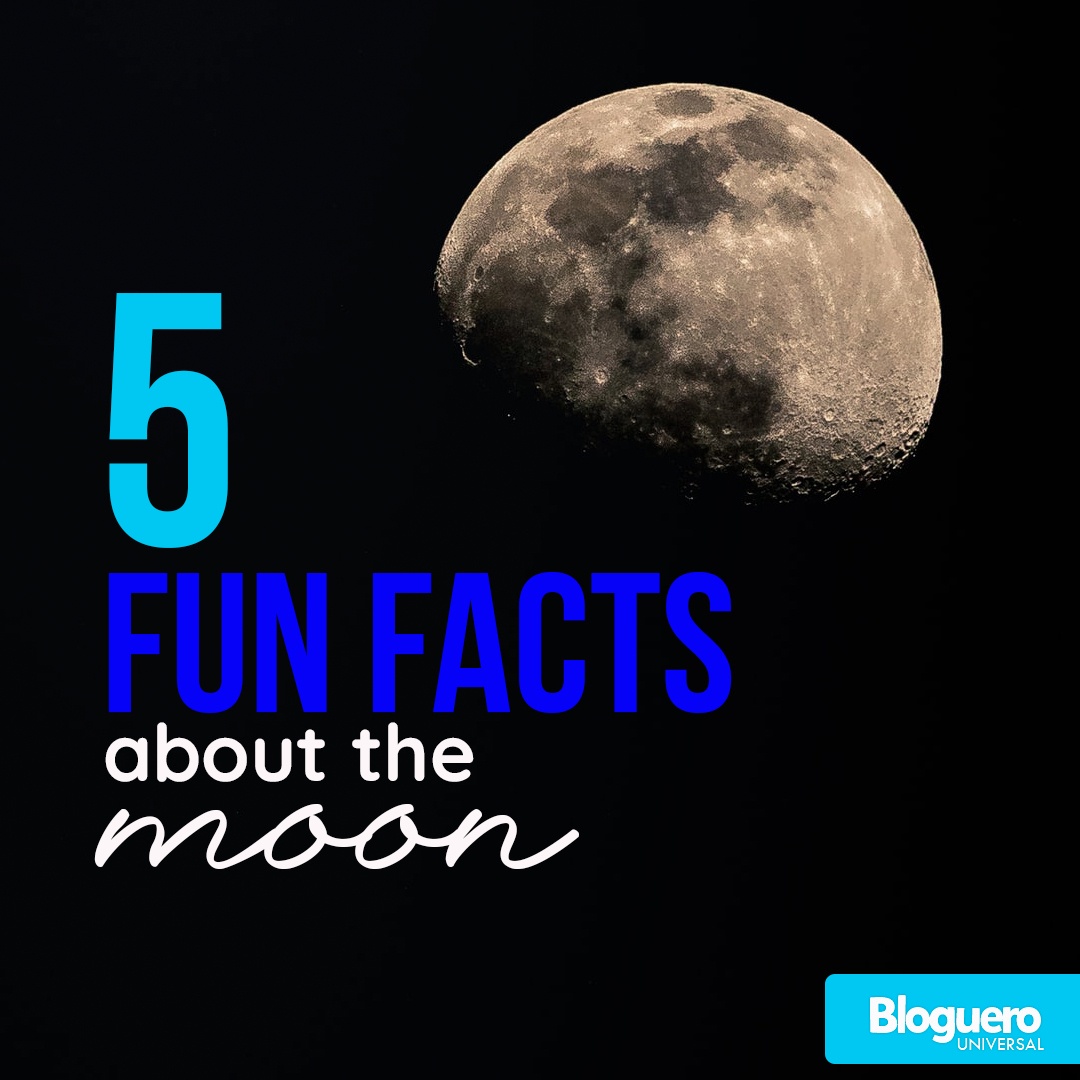
Fun facts about the moon / Datos curiosos sobre la luna
The Moon is moving 3.78 cm away from Earth per year, it is also shrinking because its core is cooling.
Although at some point it seemed impossible to reach the Moon, today it is the only celestial body where the human being has made a manned descent.
To commemorate half a century of this feat, today we tell you through Julieta Fierro Gossman and Alejandro Farah Simón, researchers at the UNAM Institute of Astronomy, five curiosities of the Moon that few know.
1. The Moon is gradually moving away from the Earth
A mirror system was installed on the Moon that allows us to constantly measure the distance to Earth. "We know that the orbit of our satellite is elliptical, and depending on each epoch the distance is between 350 thousand and 400 thousand kilometers."
However, with this equipment, the scientists detected that the natural satellite is gradually moving away from our planet. "We are talking about 3.78 centimeters a year, do not be scared that nothing happens," said Alejandro Farah.
2. The Moon is shrinking
When the astronauts went to the Moon they left a seismograph from which data was sent to Earth. However, at that time the technology of today did not exist, and it was impossible for the computers of that time to analyze the information. After five years they decided to shut down the equipment.
Half a century after this feat, they took the data back to analyze it and found very interesting details. In fact, they understood what its interior is like and "it actually has a semi-liquid part, but the most important thing is that it has been shrinking, this because its core is cooling down," explained Julieta Fierro.
3. It always gives the same face to the Earth
The period in which the Moon moves and rotates around the Earth is the same. "This means that while it goes around our planet at the same time it rotates on its own axis, and consequently it always shows us the same face," explained Farrah Simón.
4. The Earth and the Moon exchange small rock fragments through meteorites
Half a century ago, when astronauts went to the moon, they collected some samples, and it turned out that a small rock they brought was terrestrial.
But, everyone wondered how did he get there? Julieta Fierro explained that a meteorite crashed on our planet, and with the impact fragments flew into outer space and some reached the Moon.
Curiously, it has also happened the other way around, we have lunar rocks that have reached Earth through the impact of a meteorite on the Moon. When these fragments enter the atmosphere, the material melts and becomes tektites, added Fierro Gossman.
5.- The Moon is 400 times closer to the Earth than the Sun
The Moon is 400 times closer to the Earth than the Sun, and it is also 400 times smaller seen from our planet than this star. "That means that when the Moon passes between the Earth and the Sun it covers it exactly, and it is because of this that we can have total eclipses of the Sun."
Finally, I will tell you an interesting fact about Jupiter.
Before the studies of the mathematician Galileo Galilei, it was not known that other planets in the Solar System had satellites. One day, this renowned astronomer looked at the planet Jupiter and found around it 4 dots that he called “stars”, however, they were some of his satellites.
Today we know that Jupiter has 79 satellites and that other planets in the solar system have as well.
- Comments (4)
- Recommended
- Milestones
Here are your recommended items...
Here are your milestones...









See a picture of me about the moon, photographed with my NikonP900.